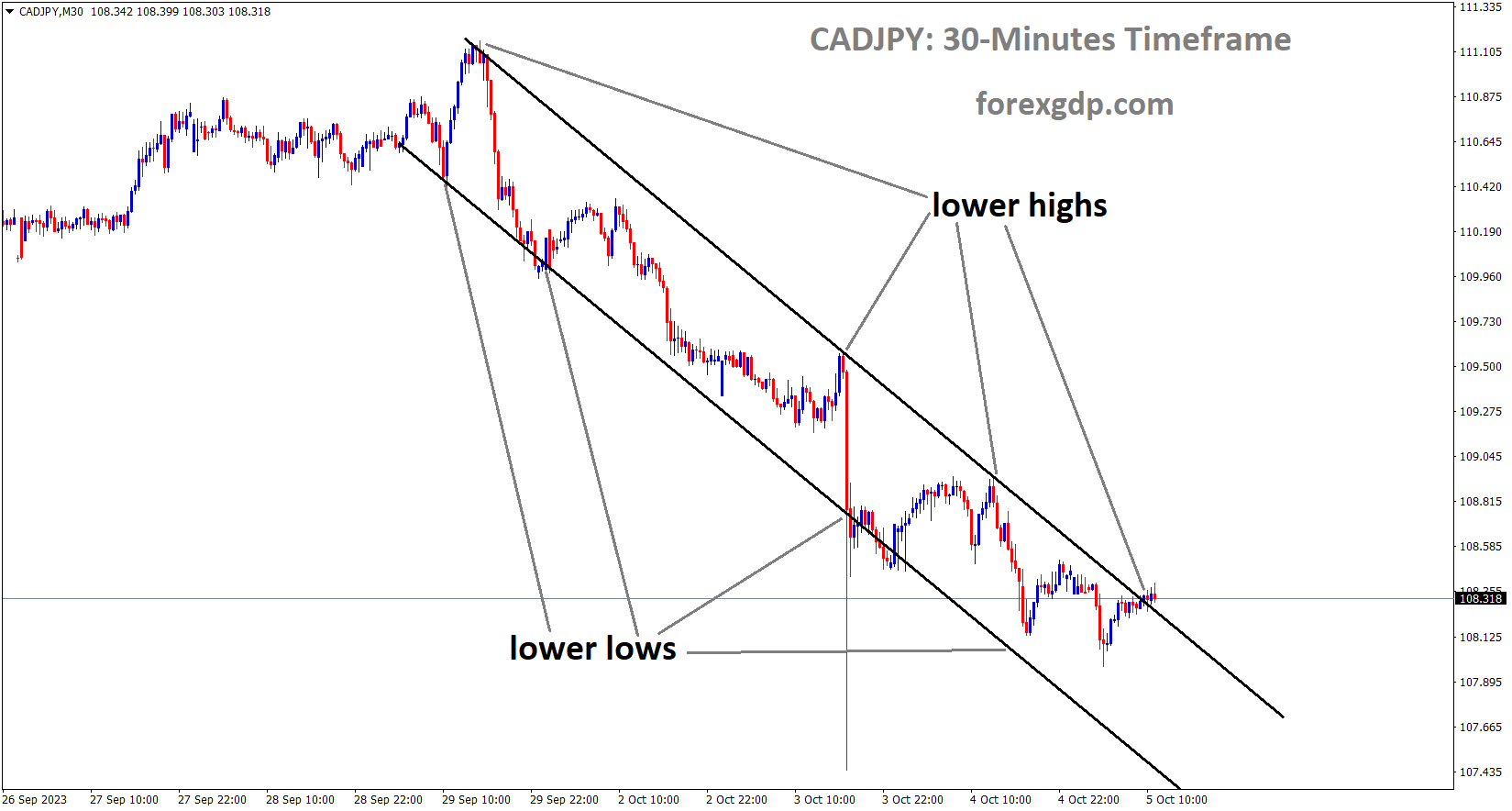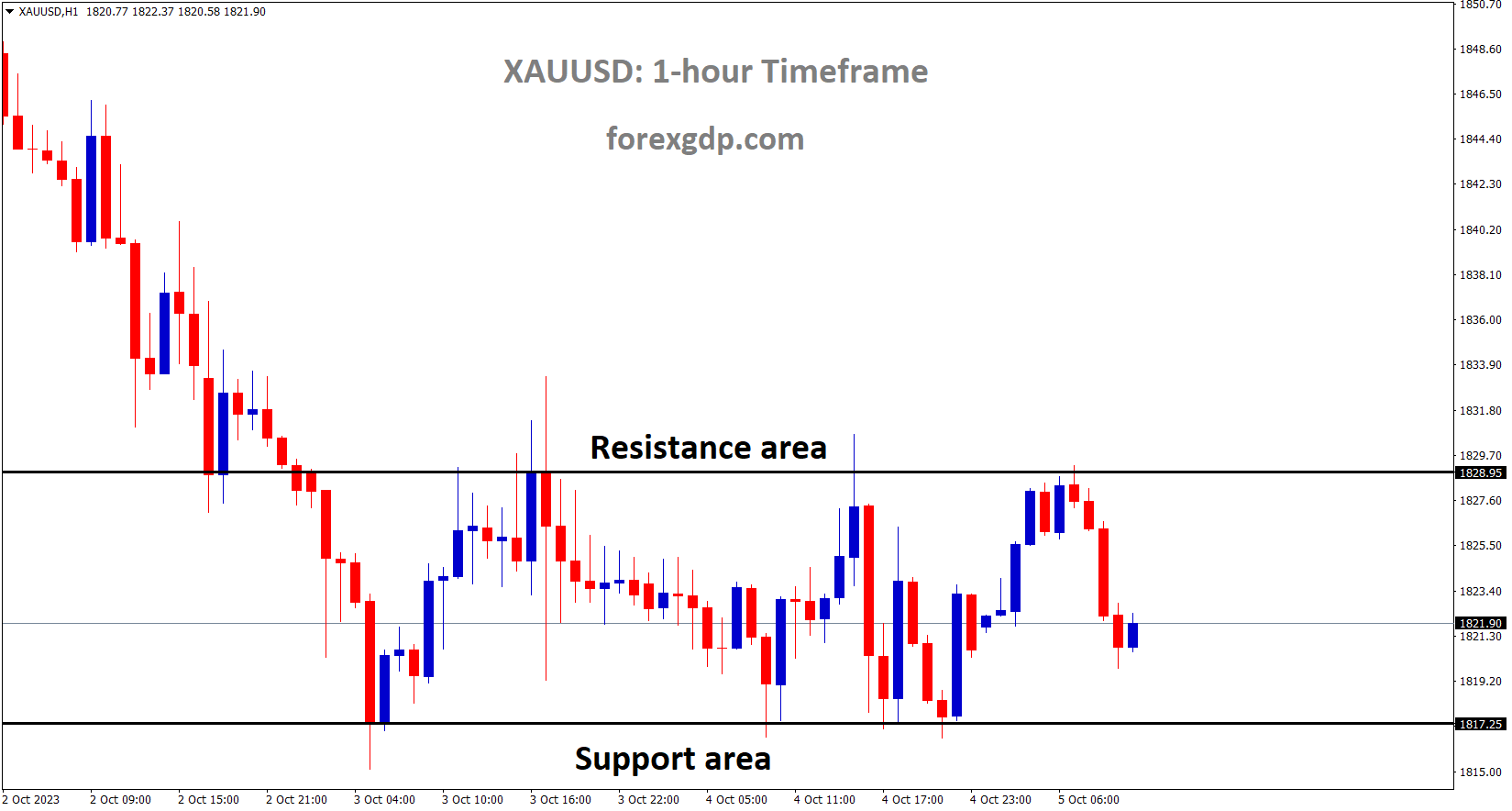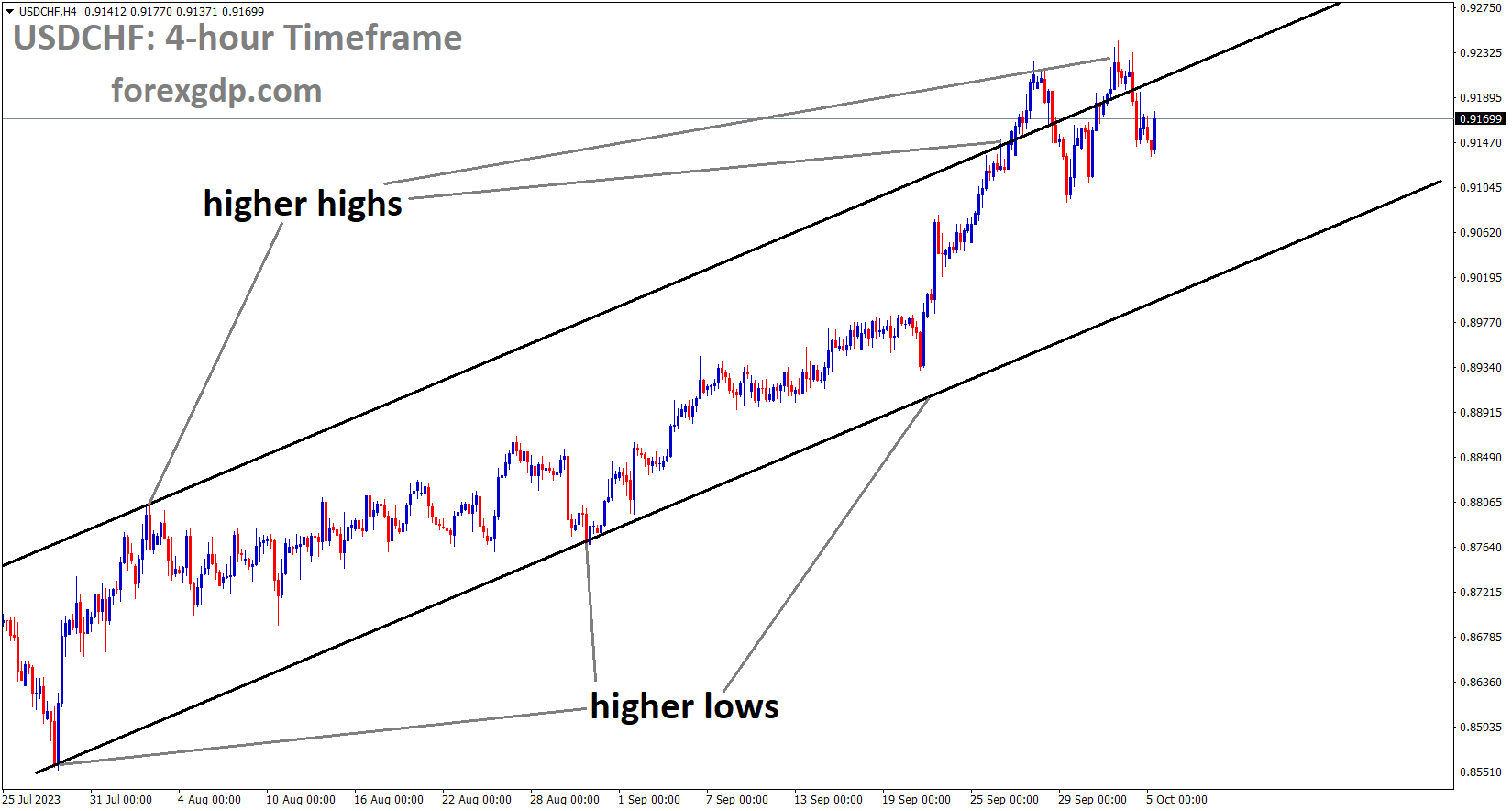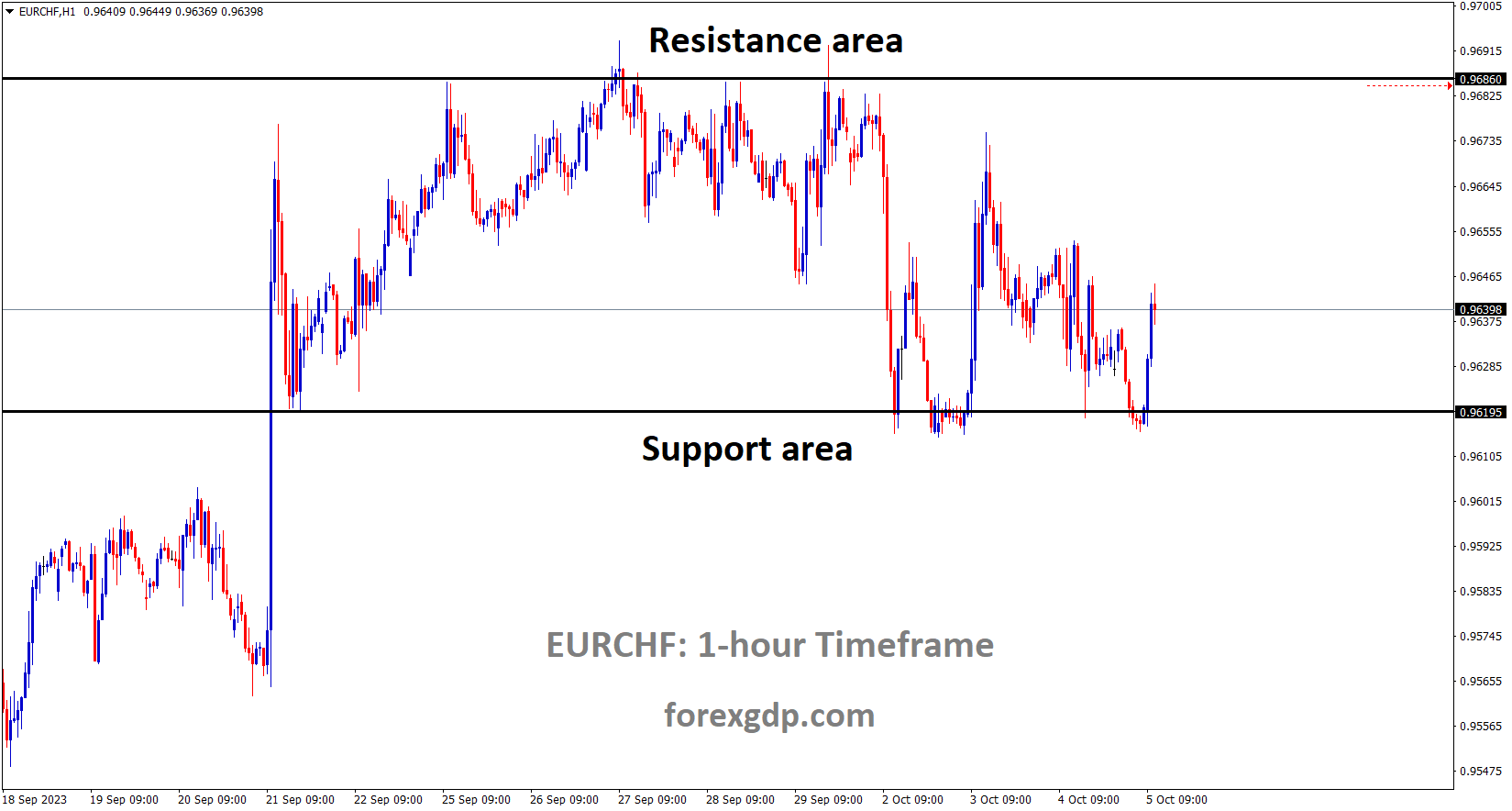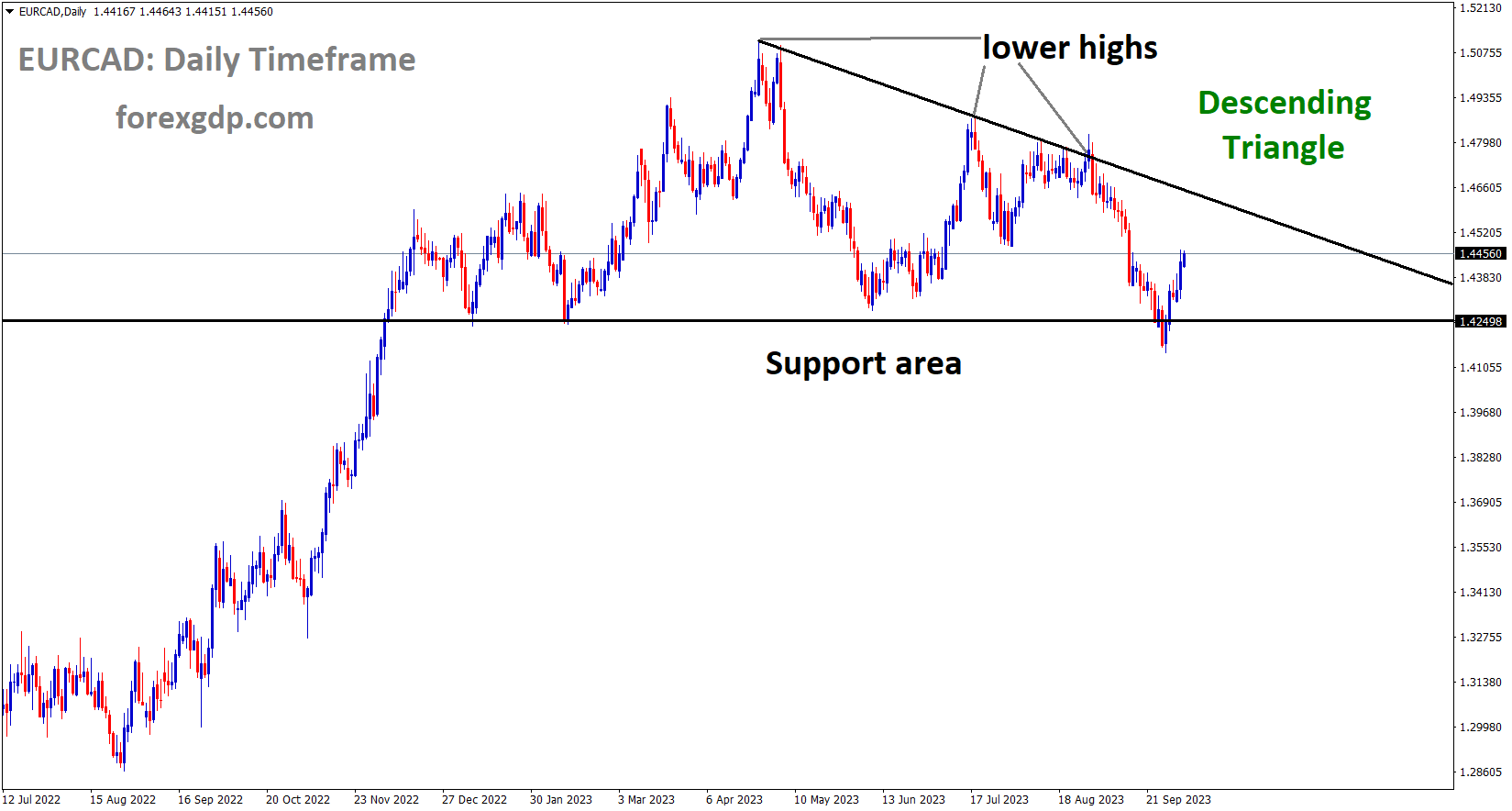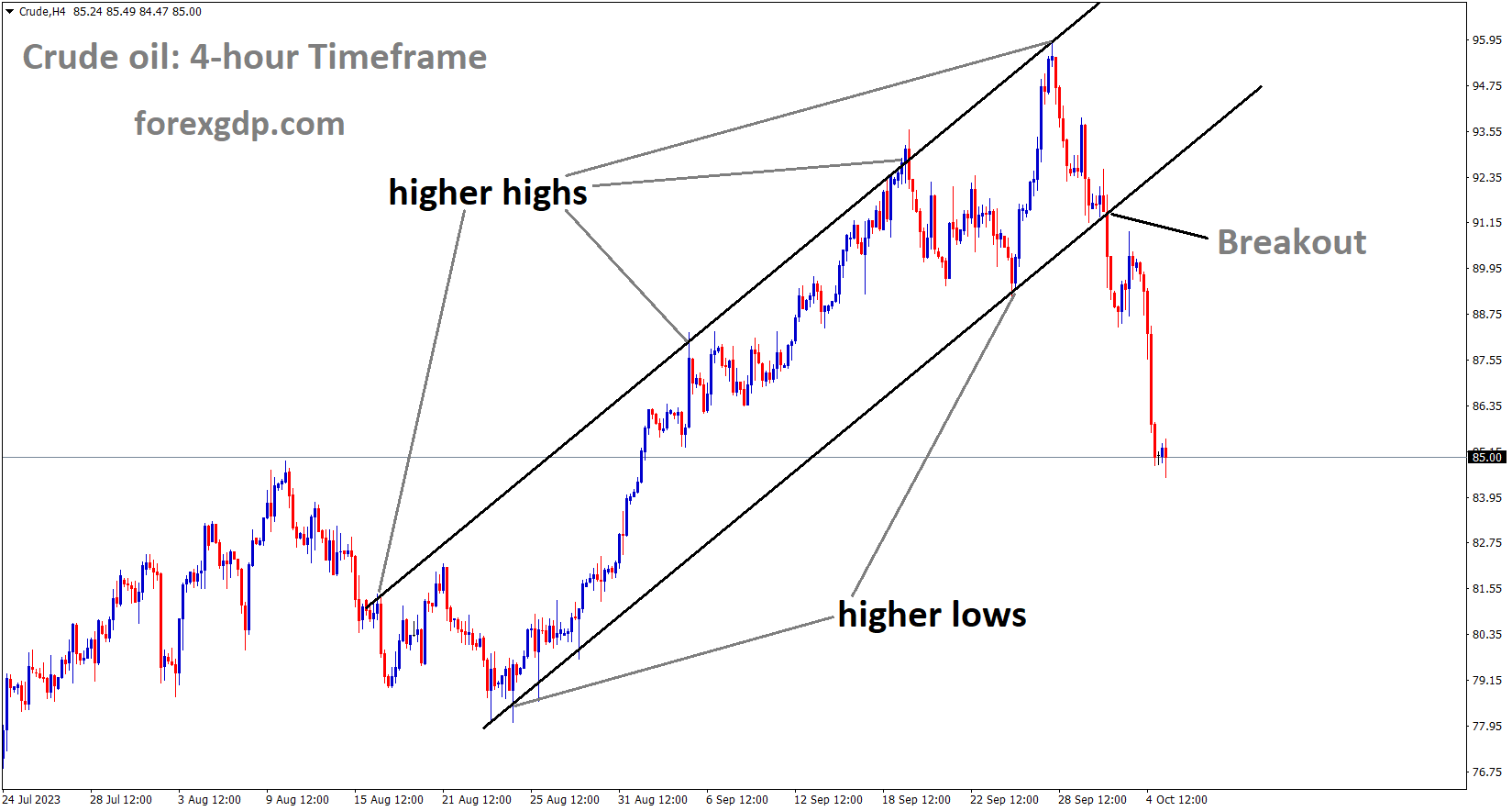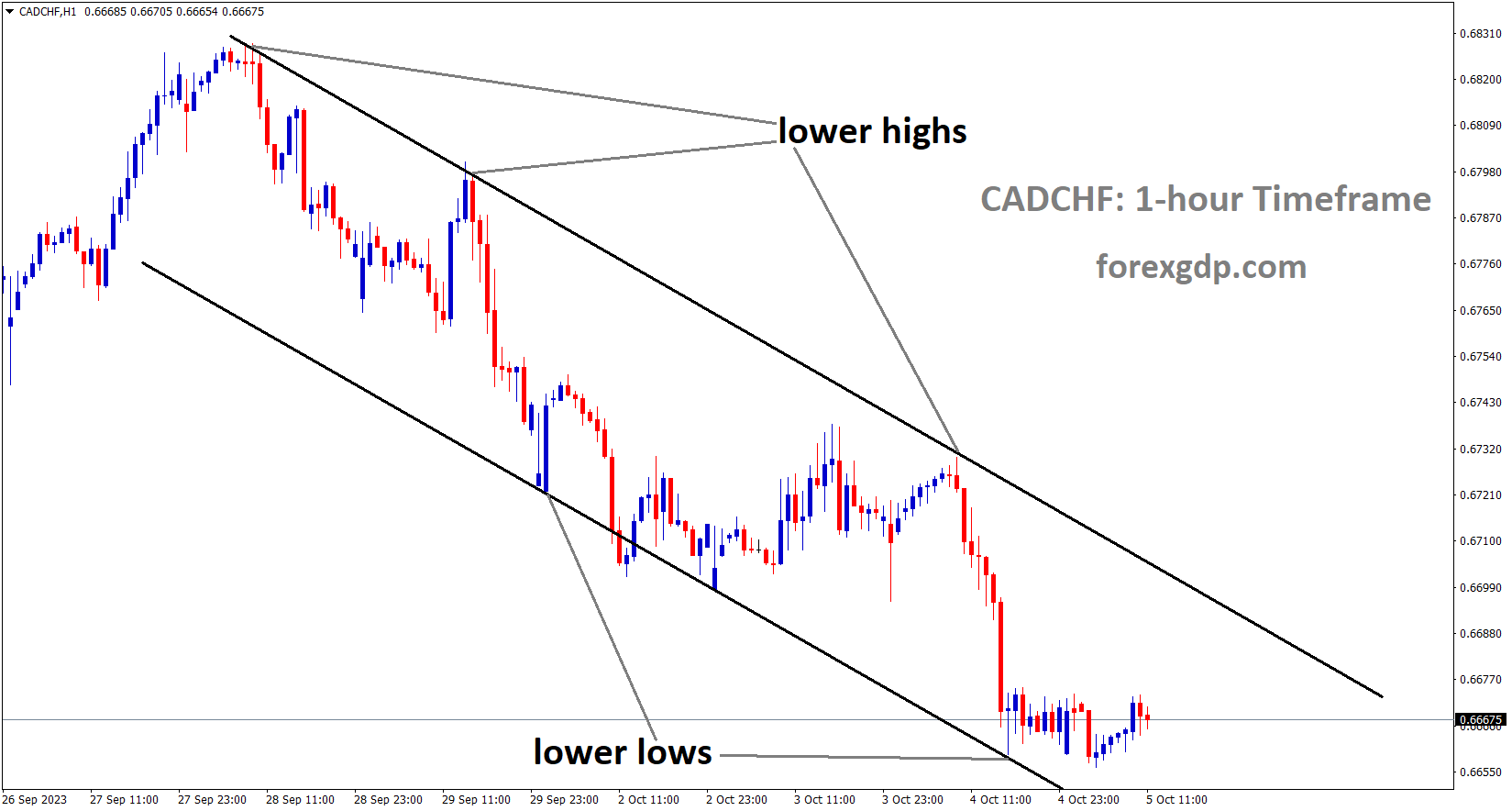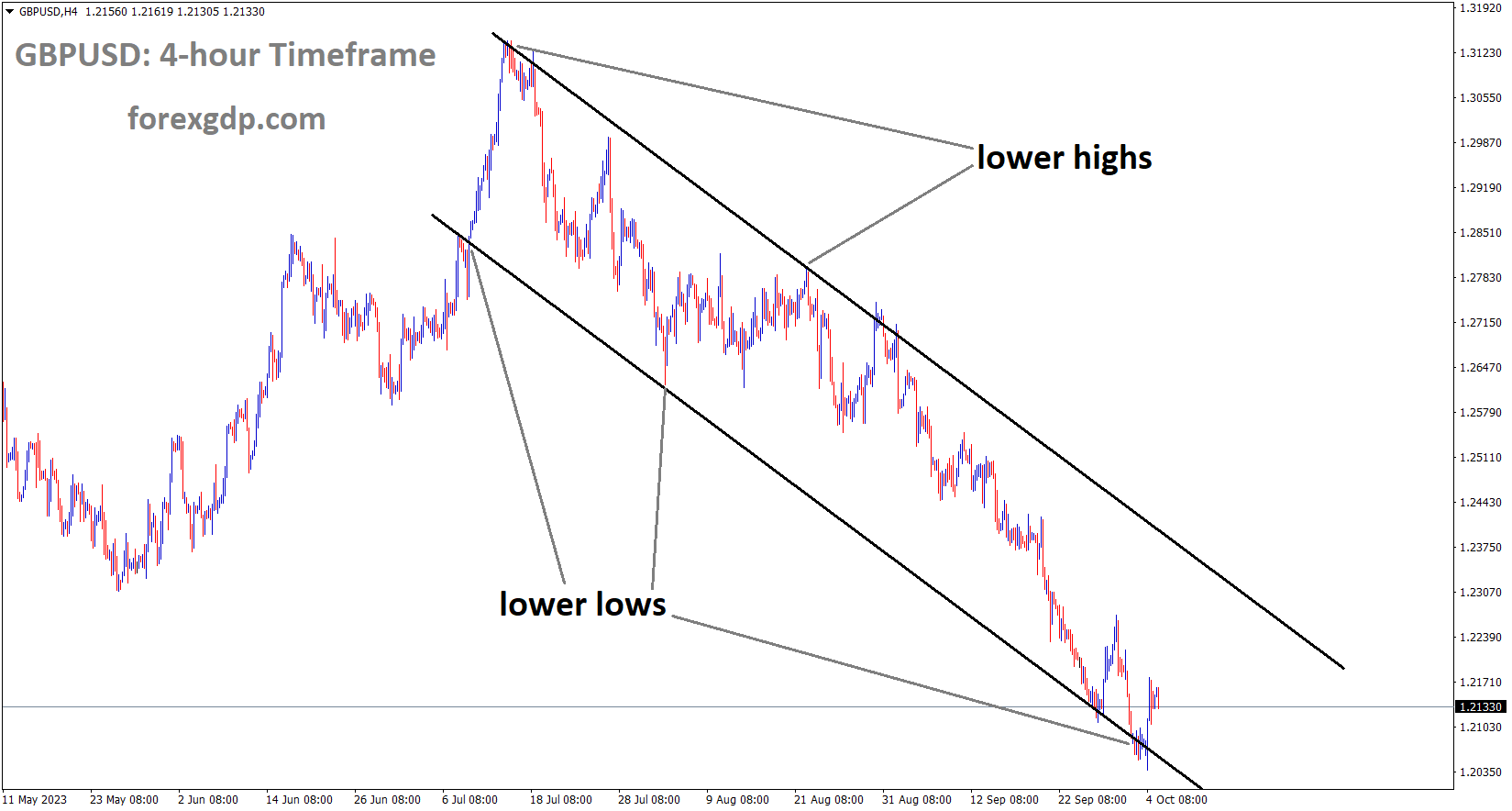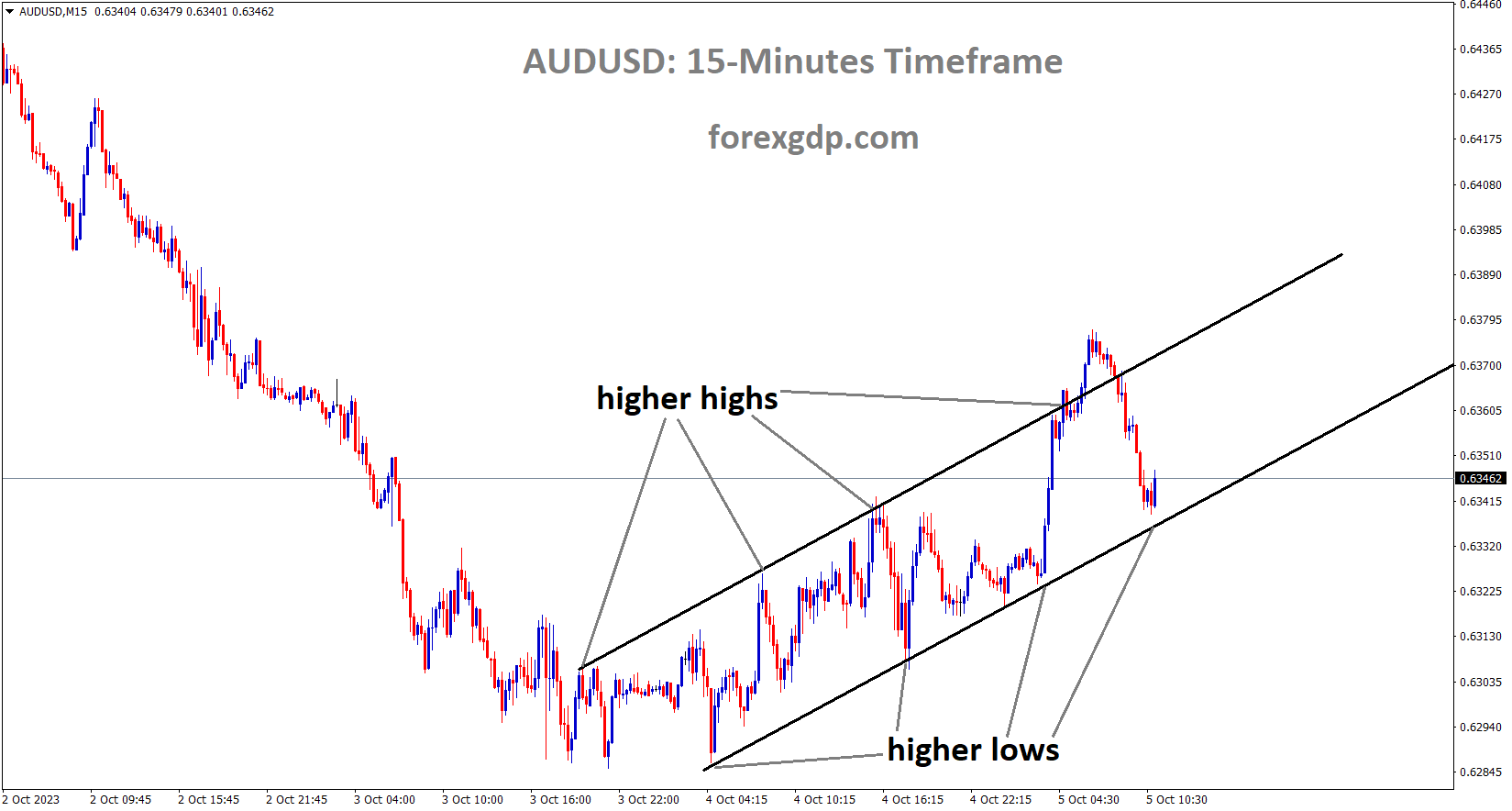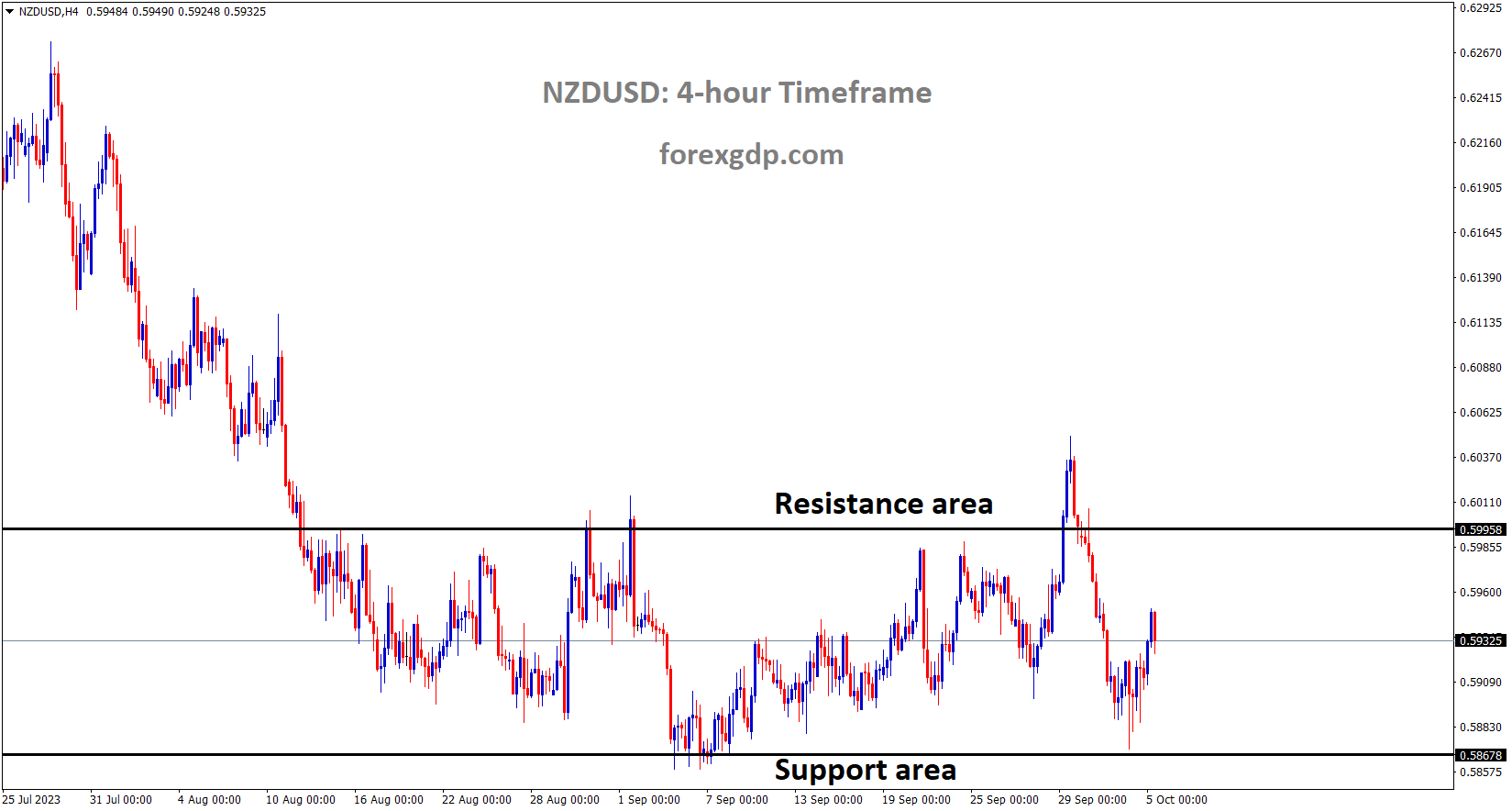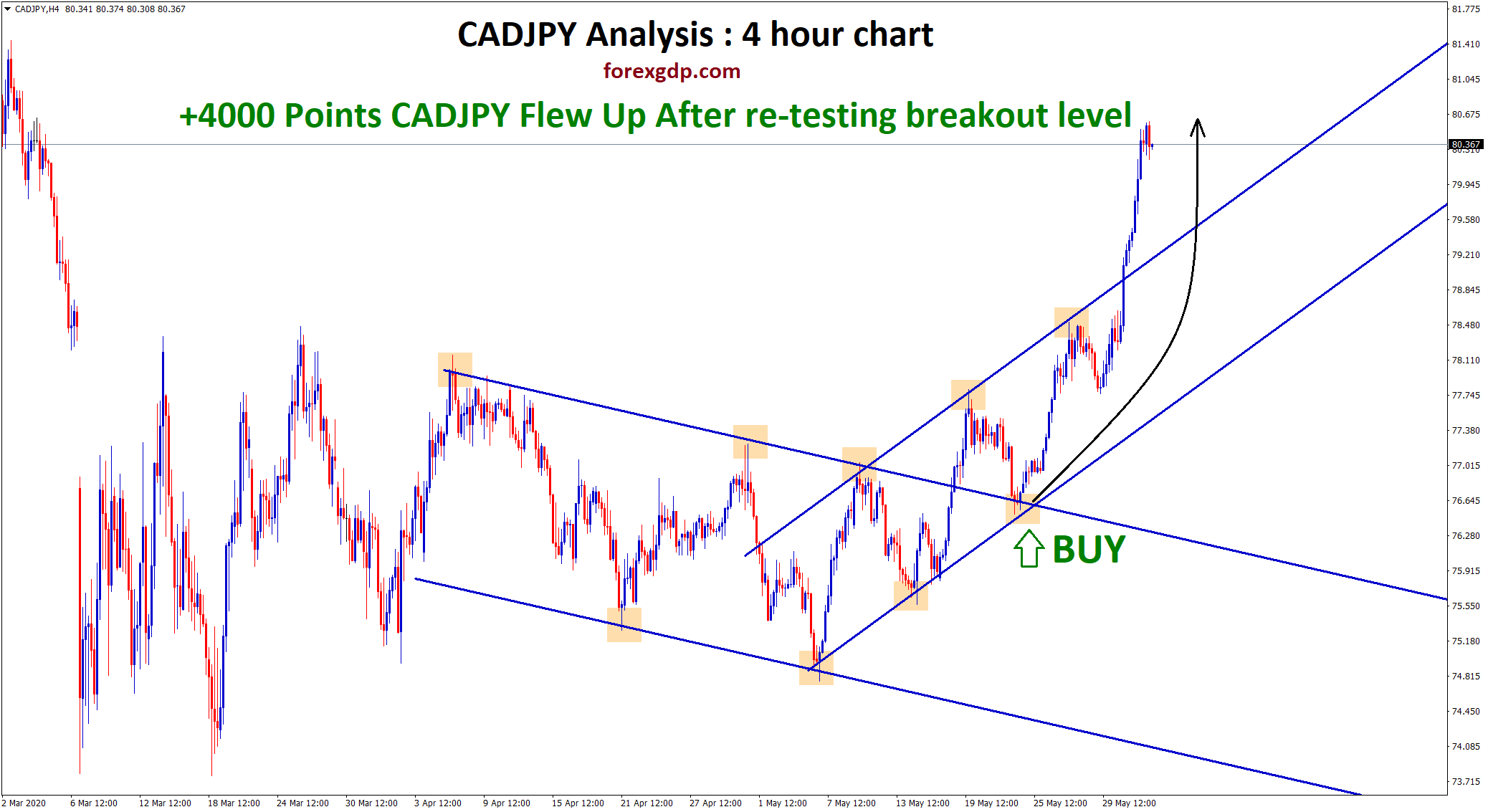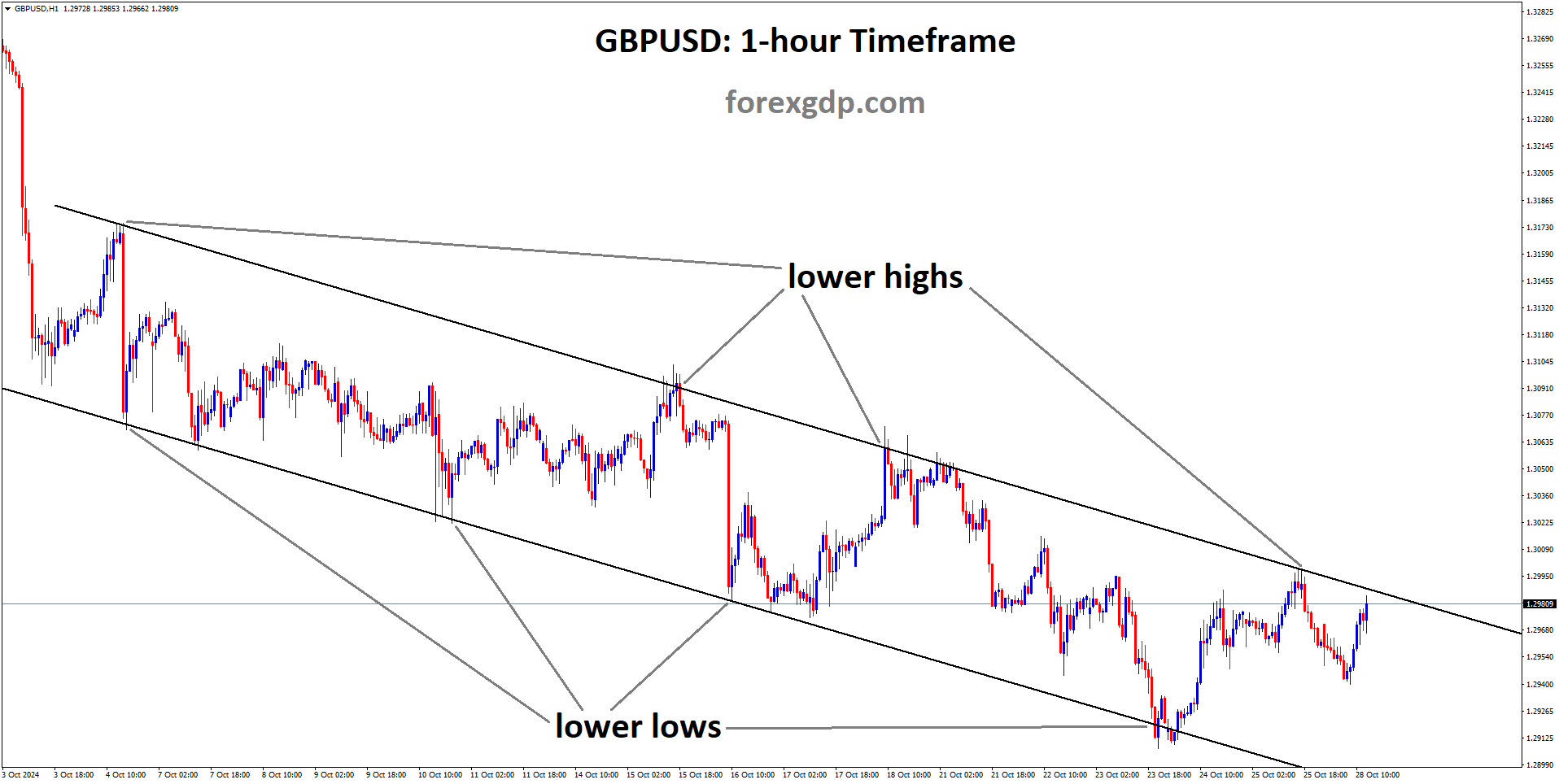CADJPY Analysis
CADJPY is moving in the Descending channel and the market has reached the lower high area of the channel
The Japanese authorities stated that there is no intervention taking place here and that the market is simply correcting itself as a result of extreme volatility on one side of the market.
The 10-year Japanese Government Bond yield on the JPY hit 0.8% on Wednesday, the highest level since 2013. The BoJ was under increased pressure to raise the yield-curve cap and get ready to abandon its negative interest rate policy. Early on Wednesday, Masato Kanda, Japan’s top currency diplomat, stated that any intervention would focus on volatility rather than currency levels and noted that it is customary for authorities to remain silent on whether or not they intervened.

Senior Cabinet Secretary Hirokazu Matsuno of Japan stated on Monday that he will keep taking the necessary actions regarding foreign exchange, but he would not comment on whether Japan interfered in the foreign exchange market. It is noteworthy that last year, BoJ took action at the 150.00 mark.
Gold Analysis
XAUUSD Gold price is moving in the Box pattern and the market has fallen from the resistance area of the pattern
Gold prices have fallen against the US dollar ahead of tomorrow’s Non-Farm Payroll data. 170k jobs are expected to be added, compared to 187K jobs added in July.
Gold prices rose slightly on Wednesday as the US dollar fell, but traders remained somewhat bearish on precious metals and avoided taking significant exposure in the space given the recent unhinged moves in yields. In this context, gold was up about 0.15% to $1,823 in early afternoon New York trading ahead of key data later this week. On Friday, the Bureau of Labour Statistics will release the September nonfarm payrolls survey. According to consensus estimates, employers in the United States added 170,000 jobs in August, after hiring 187,000 people in July. As a result, the unemployment rate is expected to fall to 3.7% from 3.8% previously, indicating a continuing imbalance between supply and demand for workers.
If labour market data surprises to the upside, yields are likely to rise further. This is based on the assumption that economic resilience will compel policymakers to deliver another quarter-point hike this year and keep interest rates high for a longer period of time in order to maintain price stability. In this scenario, the 10-year nominal note may approach 5.0%, while the 10-year TIPS may exceed 2.50%. Meanwhile, the US dollar may reach new multi-month highs, weighing on both gold and silver. The chart below, with gold depicted on an inverted scale, shows how bullion has trended downward as the 10-year real yield in the United States has broken out on the upside, indicating a strong inverse correlation between both instruments.
USDCHF Analysis
USDCHF is moving in an Ascending channel and the market has fallen from the higher high area of the pattern
The ADP Private Employment Change in the United States was 89000 versus 153000 expected, the lowest reading since January 2021. The Swiss Franc gained little after the data was released.
The prolonged losses in the US Dollar USD, which may have been caused by the dismal US employment data on Wednesday, put downward pressure on the pair. The US ISM Services PMI dropped from 54.5 to 53.6 in September, which was expected. The ADP Employment Change for the same month rose by 89,000, which was less than the 153,000 predicted by the market and the lowest since January 2021.
EURCHF Analysis
EURCHF is moving in the Box pattern and the market has rebounded from the support area of the pattern
The Service PMI for September came in at 48.7 versus 48.4 expected and 47.9 previous reading, indicating that the Eurozone is expected to contract in Q3. Retail sales decreased from the previous reading of -1% to -2.1%.
PMI data showed slight improvements in manufacturing and services, but the overall outlook is still dangerous. Given that the report indicated the fastest decline in demand over the previous three years due to higher interest rates and rising prices, the euro zone economy most likely saw a contraction in Q3. With the exception of the German services sector, which printed at 50.3, most measures remain below the 50 threshold that divides expansion from contraction. The GDP of the Euro Area has grown by just 0.1% in each of the last two quarters, indicating stagnant growth.
Treasury yields have surged in the United States as the “longer for higher” narrative gains momentum and Fed officials hint at the possibility of another rate hike before year-end. On the other hand, investors believe that the ECB’s interest rate peak has probably been reached, which lessens the currency’s bullish potential. Treasury securities seem to be carrying a premium, which indicates that bond holders expect higher returns in exchange for taking on more risk. A downgrade of US debt, increased deficit spending, and the burden of higher interest rates on debt repayments are some of these risks.
EURCAD Analysis
EURCAD is moving in the Descending triangle pattern and the market has rebounded from the support area of the pattern
According to ECB Vice President Luis De Guindos, tighter policies will cause inflation and GDP to reach 2% in the years 2023–2025. Labour cost effectively managed, we keep using a data-dependent strategy.
European Central Bank Vice President Luis de Guindos said on Wednesday that the economic activity in the Euro area is likely to remain subdued in the coming months, as reported by Reuters. The labour market remains resilient. A substantial share of the transmission from financing conditions to the real economy is expected to still be in the pipeline.
Underlying price pressures remain strong. Labour costs are increasingly contributing to domestic inflation. We will continue to follow a data-dependent approach. The downward impact of our tightening so far on GDP and inflation is estimated to average around 2 percentage points over the 2023-25 period
Crude Oil Analysis
Crude Oil price has broken the ascending channel in downside
The PMI for Canadian Manufacturing was 48.0 as opposed to 47.5. According to Canadian Deputy Governor Vincent, following the implementation of the rate hike, consumer and business spending will decline.
Data from Canada’s S&P Global Manufacturing PMI showed a decrease from 48.0 to 47.5 in September, the previous reading. According to Nicolas Vincent, deputy governor of the Bank of Canada, Canadian businesses have been impacted by the pandemic and have changed their prices more frequently and larger. This has resulted in them passing on higher costs to customers, which could accelerate inflation.
Vincent’s comments helped Canadian bond yields, as market sentiment suggested that the Bank of Canada (BoC) would likely raise interest rates again in the near future. A 65% chance in money markets indicates that there may be one more rate hike this year, which could provide the Canadian dollar (CAD) with vital support.
CADCHF Analysis
CADCHF is moving in the Descending channel and the market has rebounded from the lower low area of the channel
The price of crude oil, a vital commodity for Canada as a top oil exporter to the US, declined, the Loonie was put under pressure. West Texas Intermediate (WTI) crude oil failed to demonstrate positive momentum despite the declining value of the US dollar (USD), with the spot price currently hovering around $83.50 per barrel. Looking ahead, market players will be watching Friday’s job reports and the release of the Canadian Ivey Purchasing Managers Index (PMI) for September.
GBPUSD Analysis
GBPUSD is moving in the Descending channel and the market has rebounded from the lower low area of the channel
In September, the UK Global Services PMI was 49.3, which was higher than the previous reading of 49.5 and the expected 47.2. Following the publication of data positive numbers, the value of the UK pound increased marginally.
The September US ISM Services PMI data was 53.6, down from 54.5 the previous day, which resulted in minor corrections in the US dollar against counter pairs.
As a result of reductions in consumer and non-essential business spending, service sector activity continued its downward trend in September, according to Tim Moore, director of economics at S&P Global Market Intelligence. Though it was only marginal and slower than implied by the earlier ‘flash’ PMI reading, the UK service sector output decline was the largest since the year’s beginning. This was in contrast to the spring’s robust growth.
In terms of data releases, the latest ADP employment report for the United States did not meet forecasts. The September report states that this is the slowest growth rate since January 2021, when private employers cut employment. Private employers added 89k new jobs in September, which was less than the +177k jobs added in August and the +153k jobs anticipated. The US dollar slightly decreased after the ADP report was released, but it is still at high levels. As of right now, the yield on the 30-year US bond is 4.88%, while the benchmark 10-year bond yields 4.76%. These yields are nearing multiyear highs or at multiyear highs.
By far the largest and largest contributor to the US GDP overall is the services sector. As such, it offers an essential indication of the US economy’s general health. The purchasing managers of the companies, who frequently notice changes in trends before they spread to the wider economy, provide their opinions in the PMI report. The composite measure decreased from 54.5 to the anticipated 53.6 in what is still thought to be a favourable result. A sector is said to be expanding if the figures are over 50, and to be contracting if they are below 50.
The new orders data, which showed a significant decline in September from 57.5 to 51.8, is one noteworthy subcategory. Even so, the decline is still above 50 and is seen favourably, though it should be watched in the print for next month. On the other hand, while employment declined and prices remained constant month over month, business activity and production were seen to be rising. This week is critical for labour market data because the JOLTS report shows that there are still a lot of open positions and that ADP employment for September was below expectations. Watch for Friday’s NFP report and tomorrow’s first jobless claims.
AUDUSD Analysis
AUDUSD is moving in an Ascending channel and the market has reached the higher low area of the channel
While the Australian economy’s trade balance improved in August, the Reserve Bank of Australia kept its interest rate unchanged due to the strength of the Australian dollar.
The Australian Dollar AUD retraces some of its intraday gains while remaining higher from the previous session’s close. Following the decline in US Treasury yields, the Aussie pair received upward support from the US Dollar USD. The Australian Bureau of Statistics reported that Trade Balance data for August improved, reflecting solid growth in Australian exports, which could support the Australian Dollar AUD. However, the AUDUSD pair may face difficulties due to market scepticism about the US Federal Reserve’s Fed interest rate trajectory. Furthermore, the Reserve Bank of Australia’s RBA dovish stance in policy decisions adds to the downward pressure on the Australian Dollar. The US Dollar Index DXY is correcting from an 11-month high following disappointing US employment data on Wednesday, as well as a pullback in US Treasury yields. The initial bond sell-off, however, pushed US yields to levels not seen in years, followed by a rebound. Investors will keep a close eye on the bond market, recognising its importance in driving financial markets.
Australia’s MoM trade balance improved in August, reaching 9,640 million, exceeding market expectations of 8,725 million. The reading for July was 8,039 million. In its most recent policy meeting on Tuesday, the RBA chose to maintain the status quo, leaving the current interest rate unchanged at 4.10%. The Reserve Bank of Australia may raise interest rates, with expectations pointing to a peak of 4.35% by the end of the year. This forecast corresponds to the persistent rise in inflation above the target. Michele Bullock, the newly appointed governor of the RBA, emphasised the need for additional tightening of monetary policy in her inaugural monetary policy statement following the interest rate decision. Bullock noted that recent data point to inflation returning to the target range. While inflation in Australia has peaked, it remains high and is expected to remain so for some time. In September, the US ISM Services PMI fell from 54.5 to 53.6, as expected. The September ADP Employment Change increased by 89,000, falling short of the market consensus of 153,000 and representing the lowest level since January 2021. The 10-year US Treasury yield has fallen from 4.88% on Wednesday, which was the highest since 2007. Traders are looking forward to Friday’s Jobless Claims and Nonfarm Payrolls. Positive data could lead to more USD gains and increased volatility in the bond market.
NZDUSD Analysis
NZDUSD is moving in the Box pattern and the market has rebounded from the support area of the pattern
The New Zealand dollar fell against other currencies after the RBNZ maintained interest rates on the previous day. In recent months, the New Zealand economy has been weakened; the RBNZ’s inflation target of 1-3% is expected to be met in 2024-2025.
Even though the Reserve Bank of New Zealand held interest rates steady at its meeting on Wednesday, the New Zealand dollar appears to be holding above strong support against the US dollar. The New Zealand central bank maintained benchmark rates at a 15-year high, as expected, but the accompanying statement was less hawkish than expected. The RBNZ stated that policy must remain restrictive in order for inflation to return to its 1%-3% target, echoing the global higher-for-longer narrative, but stopped short of suggesting further increases.
Diverging economic growth and monetary policy outlooks in the United States and New Zealand suggest that any NZDUSD upside could be limited. New Zealand’s growth outlook has deteriorated in recent months, despite a material improvement in US economic growth expectations. Furthermore, the US Federal Reserve has left the door open for one more rate hike before the end of the year.
Don’t trade all the time, trade forex only at the confirmed trade setups.
Get Live Free Signals now: forexgdp.com/forex-signals/

